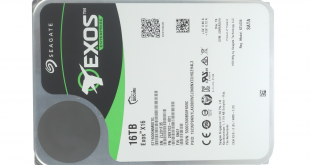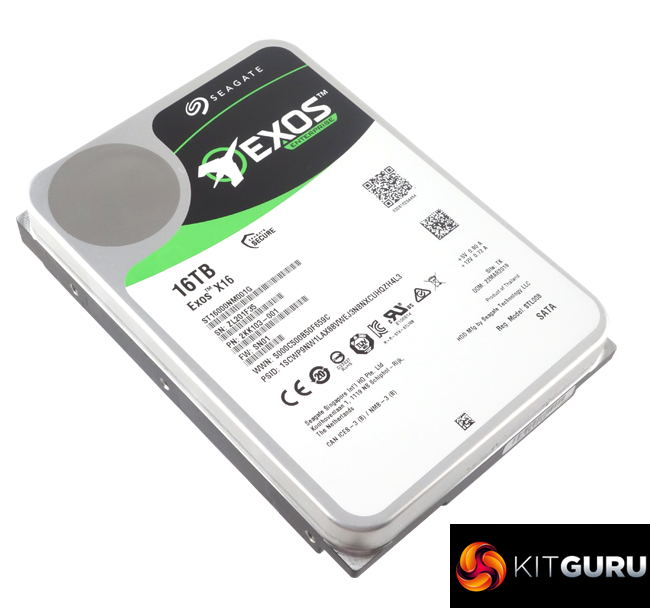
Seagate has recently refreshed the IronWolf and IronWolf Pro NAS product lines with new 16TB flagship drives. Launched at the same time was the new 16TB flagship drive for the enterprise range, the Exos X16. At launch, the Exos X16 drive is the world’s highest capacity 3.5-inch 7,200 RPM drive for the enterprise sector that is readily available.
The 16TB Exos X16 uses Helium technology which allows for 9 x 1.8TB (approx.) CMR (conventional magnetic recording) platters together with 18 TDMR heads to be crammed into a 3.5in format drive with a height of just 26.11mm. The drive has a spindle speed of 7,200rpm and is equipped with 256MB of cache. The official transfer rates for the Exos X16 are up to 261MB/s while the average latency is 4.16ms.
As with most of the Exos product range, the X16 is available with either 6Gb/s SATA or 12Gb/s SAS interfaces. There are two SATA models, the standard model (the drive we are reviewing here) which is the ST16000NM001G – and then there is a SED (Self-Encrypting Drive) version, the ST16000NM003G.
The three 12Gb/s SAS models are the ST16000NM002G (standard), ST16000NM004G (SED) and the ST16000NM009G (SED-FIPS (Federal Information Processing Standard) ).
Power ratings for the SATA drive are quoted as 5.W average idle with maximum read/write power figures of 10W and 6.3W respectively. Seagate quotes a workload rating of 550TB/year with a MTBF of 2.5M hours and back the drive with a 5 year warranty.
Physical Specifications:
- Usable Capacities: 16TB.
- Spindle Speed: 7,200rpm.
- No. Of Heads: 18
- No. Of Platters: 9
- Cache: 256MB.
- Recording Method: conventional magnetic recording (CMR)
- Interface: Serial ATA (SATA) 6Gb/s (SATA III).
- Form Factor: 3.5in.
- Dimensions: 26.11 x 101.85 x 146.99 mm
- Drive Weight: 690g
- Firmware Version: SN01
 KitGuru KitGuru.net – Tech News | Hardware News | Hardware Reviews | IOS | Mobile | Gaming | Graphics Cards
KitGuru KitGuru.net – Tech News | Hardware News | Hardware Reviews | IOS | Mobile | Gaming | Graphics Cards



